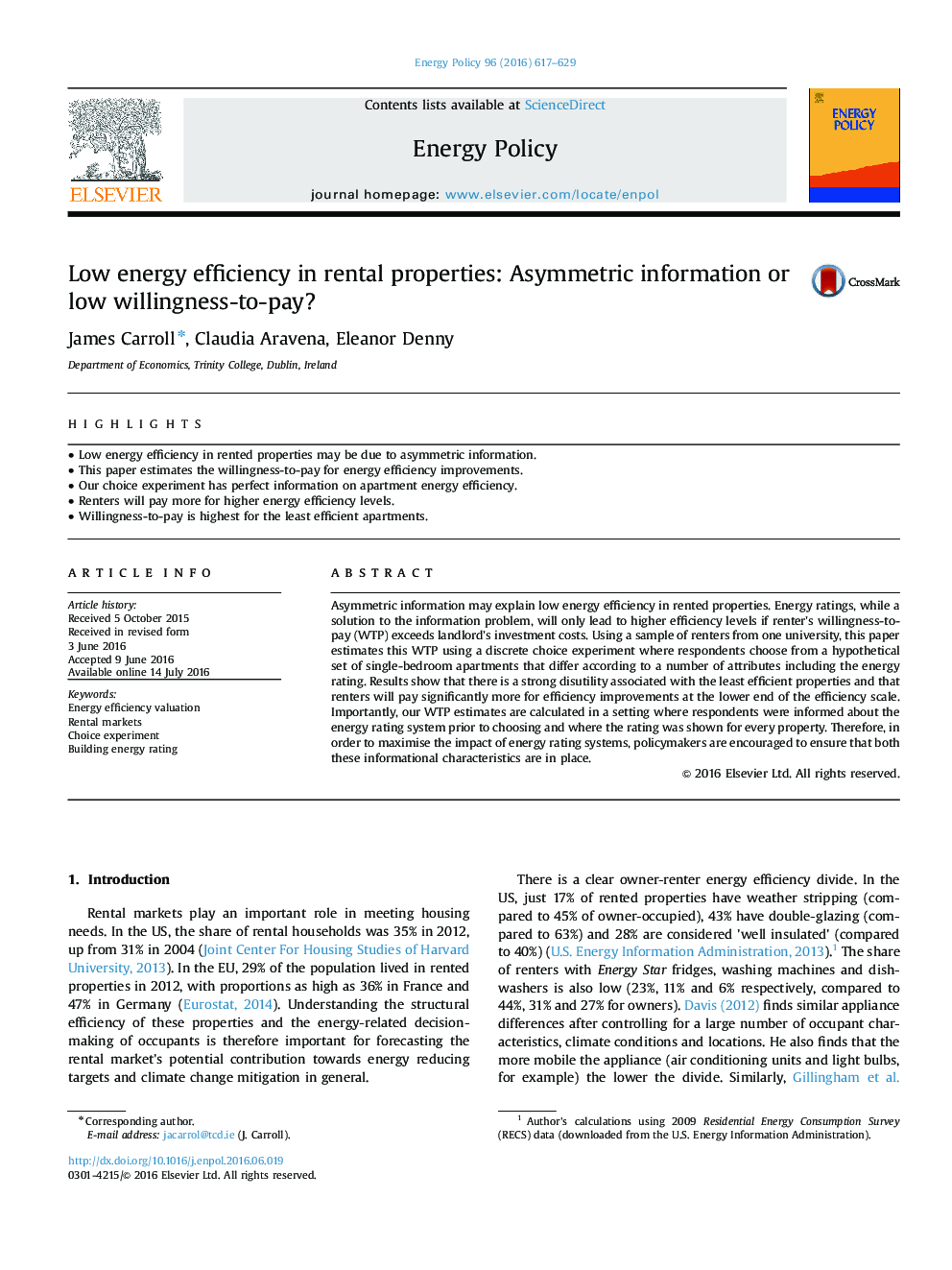| Article ID | Journal | Published Year | Pages | File Type |
|---|---|---|---|---|
| 7398789 | Energy Policy | 2016 | 13 Pages |
Abstract
Asymmetric information may explain low energy efficiency in rented properties. Energy ratings, while a solution to the information problem, will only lead to higher efficiency levels if renter's willingness-to-pay (WTP) exceeds landlord's investment costs. Using a sample of renters from one university, this paper estimates this WTP using a discrete choice experiment where respondents choose from a hypothetical set of single-bedroom apartments that differ according to a number of attributes including the energy rating. Results show that there is a strong disutility associated with the least efficient properties and that renters will pay significantly more for efficiency improvements at the lower end of the efficiency scale. Importantly, our WTP estimates are calculated in a setting where respondents were informed about the energy rating system prior to choosing and where the rating was shown for every property. Therefore, in order to maximise the impact of energy rating systems, policymakers are encouraged to ensure that both these informational characteristics are in place.
Related Topics
Physical Sciences and Engineering
Energy
Energy Engineering and Power Technology
Authors
James Carroll, Claudia Aravena, Eleanor Denny,
